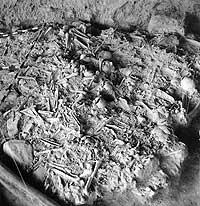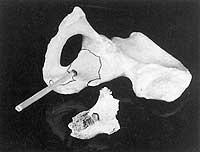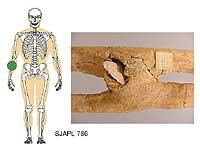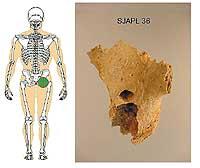Signs of violence in the bones of the Neolithic
Ancient DNA

In Europe there are rarely so many bones. Therefore, the tracks discovered in San Juan before Portam Latinam are a real treasure for researchers. Hundreds of bones appeared: skulls, vertebrae, hips, tibias...
Because of the large number of bones, it was very difficult to distinguish which bones corresponded to each body. The researchers had to draw the bones one by one and observe them carefully. Thus they realized that the corpses were not in prolonged decubitus. They were totally bent, holding their legs with their arms and wrapped, and, according to the researchers, probably in that attitude they would join to facilitate their transport to the tomb.
Among the bones were people of all ages: newborn, young and old. An ideal model for the populations of then.
Rare deposit siteThe site is special for other reasons: remains of violence have been found in the bones and in the old sites rarely have remains of violence been found. In Europe there are very few cases, only a few. In fact, until recently, no one recognized that at that time human beings used violence against human beings. The deaths were due to famines and diseases. Or perhaps violence?

In this field, 12 drawn arrowheads have been found in the bones. One of the most prominent cases is a forearm with an arrow tip inside. Apparently, the arrow struck a man. He was inside the tip of the arrow and surrounded the bones and trapped him. The man probably did not move that arm anymore.
In addition to sausages, other arrowheads have been found next to the bones. J. According to Ignacio Vegas, director of the site, these arrows were introduced into the soft organs or parts of the body. By degrading the corpses, these tips were next to the bones, and so many deposits have been found. But did those three hundred people die after a brutal attack? That's what researchers wanted to clarify.
Change in the NeolithicThe Neolithic era was a very important time in human history, from the hunting and harvesting of fruits to the productive economy, that is, livestock and agriculture. This change had a great importance for human beings. In the Neolithic, man acquired the sense of heritage, of property.
According to Lourdes Herrasti, a researcher from Aranzadi, the sense of property can provoke conflicts between groups. Some say that violence began there, but researchers are not sure. And the studies of the funeral will continue to last.
Aranzadi and the University of the Basque Country have spent 20 years studying all these bones. They have been able to sequence the genes and analyze the genetic characteristics of the remains of San Juan.
To do this, they have extracted DNA from ancient bones and teeth. With this DNA, a first analysis of sex chromosomes has been performed to know the sex of the skeletons. Until now, these studies were conducted based on their morphology and size. Depending on the skull, the morphology of the pelvis and the size of the long bones were known if they were men or women.
The oldest case of cancer in the peninsulaIn addition, in general, in this type of old bodies it is very difficult to find remains of diseases, since only 10% of the diseases leave some trace in the bones. But in this case the researchers have been fortunate. In these studies, the oldest case of cancer in the peninsula has been detected.
I know, therefore, how many new things will come out of the bones found under the rock of Laguardia. They are, undoubtedly, an important source of information to know the human groups of the time, that is, to better understand all those social changes that occurred in the Neolithic.
The most common parts in the deposits are bones and teeth. Of these is obtained the ancient DNA. However, although these pieces are well preserved, it is very difficult to get long chains of DNA. In fact, from the moment a person dies, in his body begin a series of chemical reactions that cause the degradation of all tissues of the body. But in this degradation there are elements like DNA, which to a certain extent are preserved.
On many occasions, only fragments of the DNA chain are obtained, with which researchers must draw conclusions. In addition, it is very important not to contaminate or mix ancient DNA with current DNA. For this reason, researchers always work in special cameras that ensure sterility.







